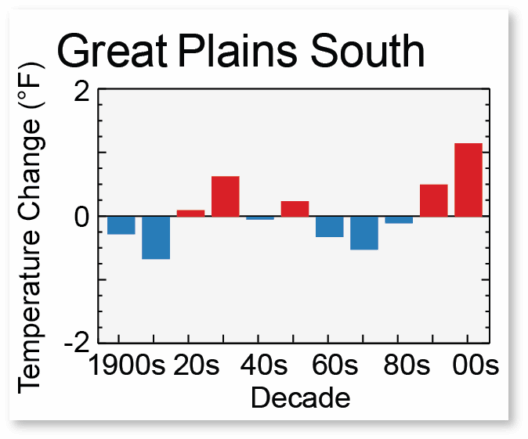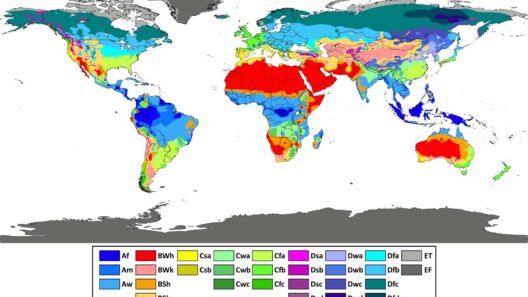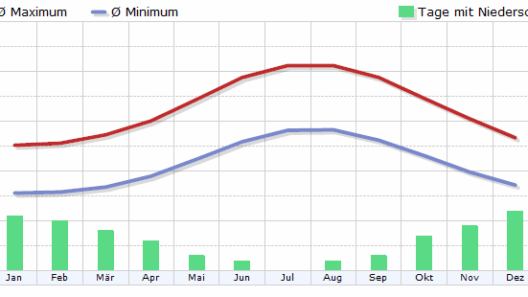South America is a diverse continent, offering an array of climates influenced by its geography, biodiversity, and the unique presence of the Andes Mountains. From the arid deserts of northern Chile to the lush rainforests of the Amazon, this continent embodies contrasts that create myriad climatic zones. Understanding the climate in South America is essential, particularly in light of the ongoing issues associated with climate change and environmental conservation.
The vastness of South America encompasses approximately 6.9 million square miles, making it the fourth largest continent in the world. The climatic variations are a result of factors such as latitude, altitude, and proximity to the ocean. The interplay between these factors contributes to the continent’s reputation as a climatic mosaic, with some regions exhibiting extreme weather patterns while others remain temperate and agreeable.
In the northern portion of South America, the climate is predominantly influenced by the equator. Countries such as Colombia and Venezuela enjoy a tropical climate characterized by warm temperatures throughout the year. This warmth is moderated by rainfall, which is abundant due to the Intertropical Convergence Zone (ITCZ). The ITCZ creates seasonal rain patterns, resulting in distinct wet and dry seasons across various regions. Areas like the Amazon rainforest benefit from this abundance, sustaining a vast array of flora and fauna, making it one of the most biodiverse places on Earth.
Moving southward, the climate begins to shift dramatically. The central portion of the continent, including parts of Brazil and Bolivia, is home to elevated landscapes, contributing to a cooler climate as one approaches the Andes. The Andes themselves serve as a formidable barrier, creating rain shadow effects that drastically alter local weather patterns. On the western slopes, rainfall is plentiful, resulting in temperate rainforests. Conversely, the eastward slopes are starkly different, characterized by arid conditions in the Altiplano and the Atacama Desert, one of the driest deserts on the planet.
The Atacama Desert, known for its stark beauty and inhospitable conditions, is a prime example of South America’s climatic extremes. The desert’s hyper-arid nature is the result of cold ocean currents, specifically the Humboldt Current, which reduces moisture in the air. This phenomenon leads to minimal precipitation, with some weather stations recording no rainfall for years. The unusual climatic conditions have fascinated scientists and tourists alike, igniting interest in the adaptations of life forms in such an unforgiving environment.
As one continues farther south, the climate becomes increasingly temperate and oceanic. Chile’s central coastline benefits from a Mediterranean climate, characterized by warm, dry summers and cool, wet winters. The city of Santiago exemplifies this climate, situated at the foothills of the Andes and experiencing events such as smog during the winter months, highlighting the complexities of urbanization within a naturally variable climate system.
Further south lies Patagonia, renowned for its breathtaking landscapes, severe weather, and significant climatic variations. The region experiences a subpolar oceanic climate that is characterized by strong winds, rapid temperature fluctuations, and substantial precipitation. Glaciers, fjords, and mountains define the landscape, providing a stark reminder of the ongoing impacts of climate change as these natural icy monuments retreat in response to rising global temperatures.
The climate of South America also cannot be discussed without addressing the significant role played by the Amazon Basin. The Amazon River is flanked by an extensive rainforest, which serves as a critical regulator of the global climate. The dense vegetation not only absorbs vast amounts of carbon dioxide but also releases significant quantities of water vapor into the atmosphere, influencing weather patterns across the continent. However, deforestation and industrialization pose grave threats to this delicate balance, exacerbating climate change effects both regionally and globally.
In contrast to the Amazon, the Gran Chaco region in Argentina exhibits a completely divergent climate. This subtropical lowland has a distinct wet and dry season, supporting a mix of forest and savanna ecosystems. The Gran Chaco’s transitional climate provides a unique opportunity for studying the impacts of changing weather patterns and biodiversity conservation in the face of human encroachment.
Another noteworthy region is the Pantanal, located in western Brazil and shared with Bolivia and Paraguay. This vast tropical wetland experiences a seasonal flooding cycle that creates one of the largest and most diverse ecosystems on the planet. The Pantanal’s floodplain supports an extraordinary array of wildlife, playing a crucial role in global biodiversity. However, climate change and unsustainable land use practices are leading to significant ecological shifts, raising concerns for the future of this precious habitat.
In summary, South America is not merely a continent of geographical wonders but also a tapestry of climatic contrasts that demand our attention. Each ecological zone presents unique challenges and opportunities related to climate change. The intricate relationships between geography, biodiversity, and climate illustrate a delicate balance that, if disrupted, can lead to significant ramifications both locally and globally. Addressing these issues requires a multifaceted approach, integrating scientific research, environmental stewardship, and sustainable practices to preserve South America’s climatic diversity for future generations.








